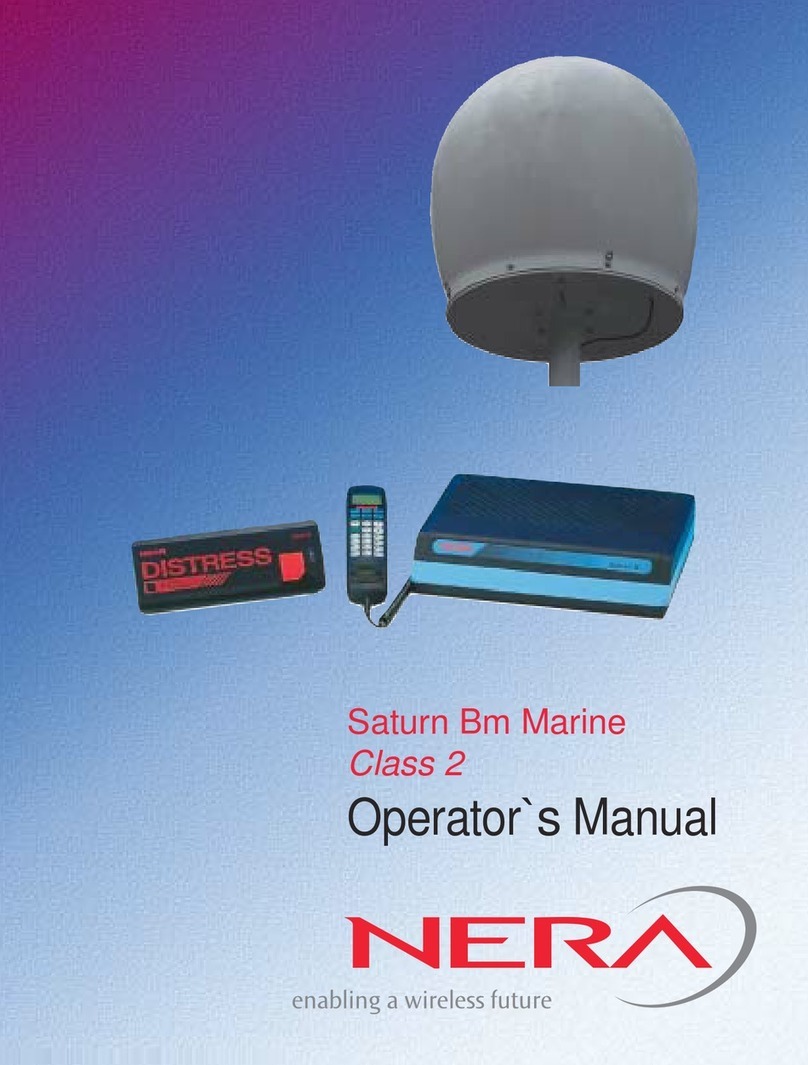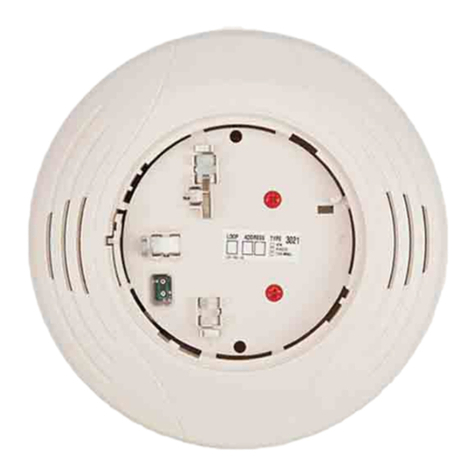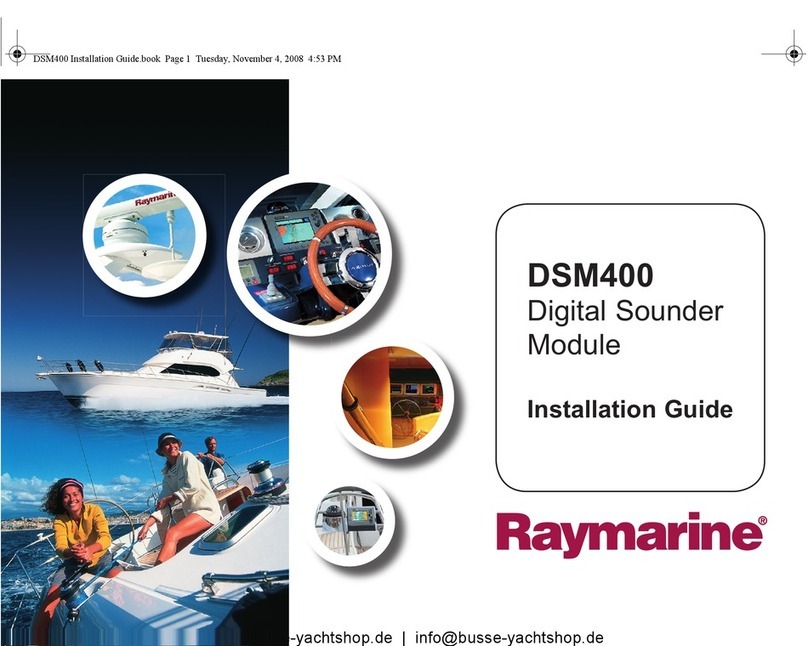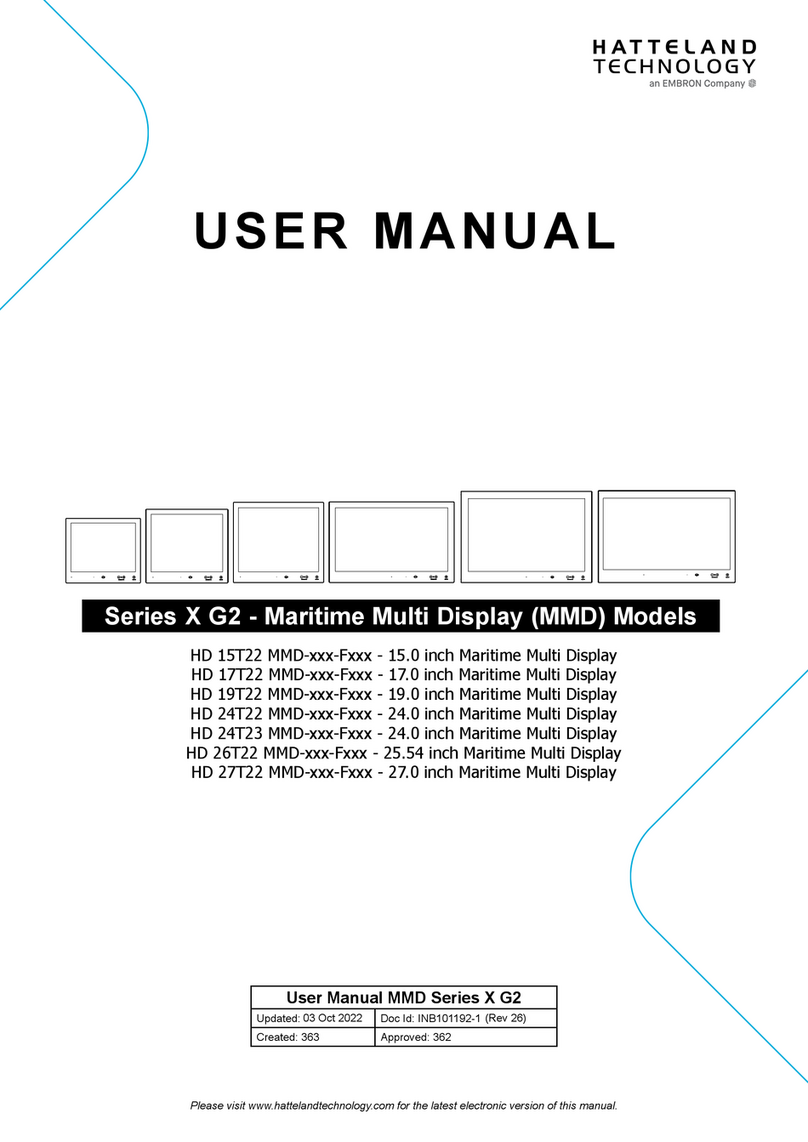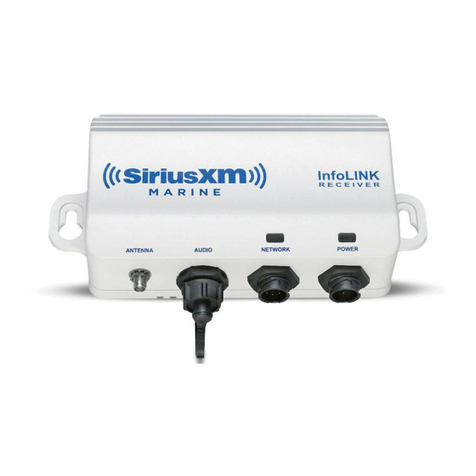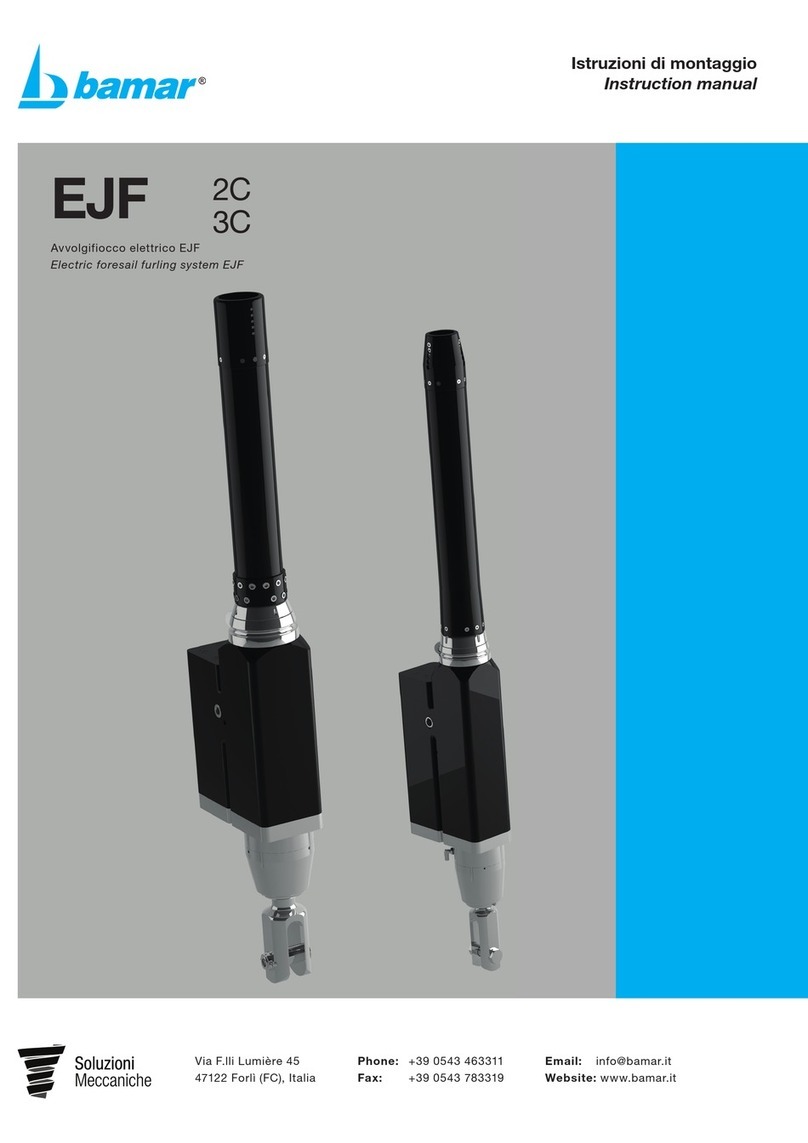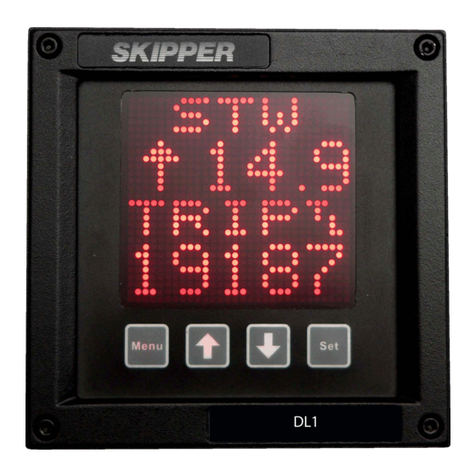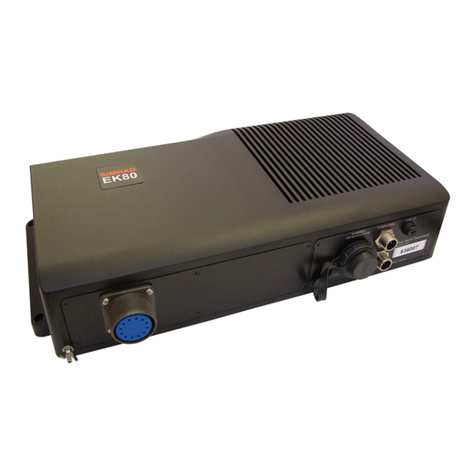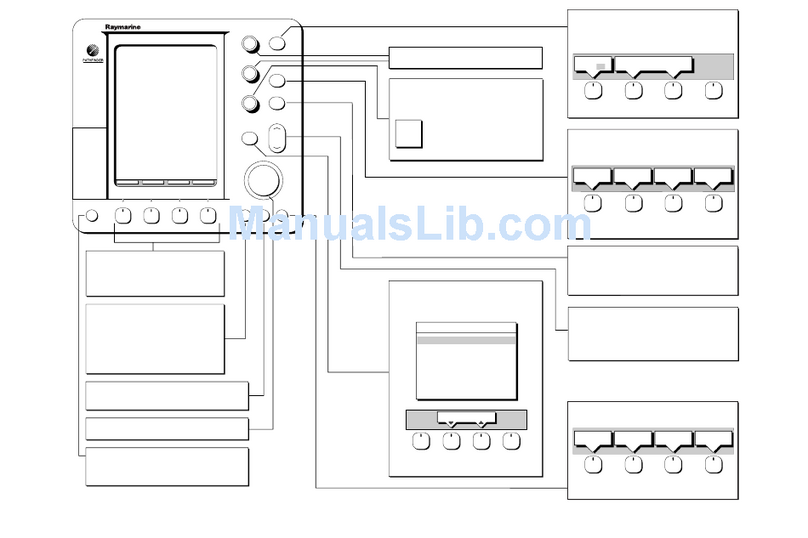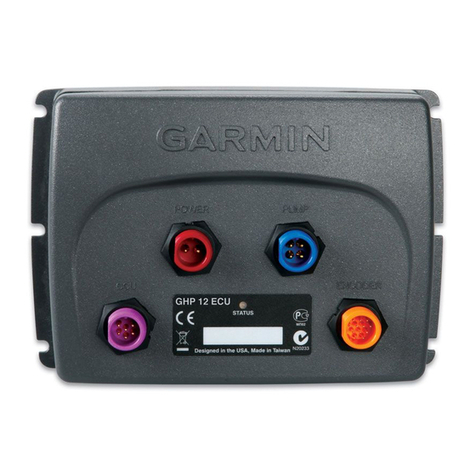Nera Inmarsat-c User manual

INMARSAT-C MOBILE EARTH STATION
Nera C
Service Manual


i
Check List......................................................................................................................1
Chapter 1. General
1.1 General...........................................................................................................................1-1
1.2 Configuration ...............................................................................................................1-2
1.3 Connection ...................................................................................................................1-3
1.3.1 Antenna and terminal unit ..............................................................................1-3
1.3.2 [Junction] port ................................................................................................1-3
1.3.3 [LAN] port......................................................................................................1-5
1.3.4 [DTE] port ......................................................................................................1-5
1.3.5 [D-GPS] port ..................................................................................................1-5
Chapter 2. Block Description
2.1 Configuration.................................................................................................................2-1
2.1.2 Boards in each unit .........................................................................................2-2
2.2 Antenna unit, IC-115 .....................................................................................................2-4
2.2.1 ANT RF board (16P0207)..............................................................................2-4
2.2.2 Antenna element.............................................................................................2-5
2.3 Terminal unit, IC-215 ....................................................................................................2-6
2.3.1 RF CON/CPU board (16P0208A)..................................................................2-7
2.3.2 TERM CPU board (16P0209) ........................................................................2-19
2.3.3 Memory contents ............................................................................................2-26
2.3.4 PWR board (16P0211)....................................................................................2-29
Chapter 3. Location of Parts
3.1 Terminal unit, IC-215 ....................................................................................................3-1
3.2 Antenna unit, IC-115 .....................................................................................................3-8
3.3 Distress alert received unit, IC-305 and ALARM unit, IC-306.....................................3-10
3.4 Junction Box, IC-315 (Option)......................................................................................3-12
Content
s
2.1.1Nera C.............................................................................................................2-1
Rev Date: September 2004 Publication No.: 105420 (Rev. 1.0)

Contents
ii
Chapter 4. Set up
4.1 System menu (F8)..........................................................................................................4-1
4.1.1 Setting by DTE port........................................................................................4-1
4.1.2 System menu (F8)...........................................................................................4-2
1. Distress Alert Setup: [F8]-1.........................................................................4-2
2. System Setup: [F8]-2...................................................................................4-2
3. Editor Setup (Close the TEXT editor display.) : [F8]-3 ..............................4-4
4. Terminal Setup: [F8]-4 ................................................................................4-5
5. EGC Setup: [F8]-5.......................................................................................4-5
6. Auto Mode Setup: [F8]-6 ............................................................................4-5
7. Email Setup: [F8]-7.....................................................................................4-6
8. Directories: [F8]-8.......................................................................................4-6
9. Configuration: [F8]-9 ..................................................................................4-7
4.2 Setting from Command Window...................................................................................4-8
4.2.1 Remote Box Setup ..........................................................................................4-8
4.2.2 Setting of Internal GPS transmitting cycle......................................................4-9
4.3 Jumper setting of IC-305 and 306 .................................................................................4-11
4.4 PR-240 power alteration................................................................................................4-12
Chapter 5. Maintenance
5.1 PV (Performance Verification) test................................................................................5-1
5.1.1 PV test sequence.............................................................................................5-1
5.1.2 Procedure ........................................................................................................5-2
5.2 Self test..........................................................................................................................5-5
5.2.1 Self test when the system is turned on............................................................5-5
5.2.2 Self test from function menu...........................................................................5-5
5.2.3 TROUBLE message........................................................................................5-6
5.3 Status monitor................................................................................................................5-8
5.3.1 Items on the status monitor.............................................................................5-8
5.3.2 NG analysis.....................................................................................................5-11
5.4 Checking BPSK waveform............................................................................................5-13
5.5 LED ...............................................................................................................................5-14
5.5.1 IC-215 .............................................................................................................5-14
5.5.2 IC-305, 306 .....................................................................................................5-16
5.6 DIP switch and Reset switch on IC-215........................................................................5-17

Contents
iii
5.7 Checking LES Information............................................................................................5-18
5.8 Changing Back-up battery on TERM CPU board .........................................................5-20
5.9 Clearing Memory...........................................................................................................5-21
5.10 Distress alert test..........................................................................................................5-22
5.11 Saving and loading of system setting...........................................................................5-24
Chapter 6. Updating program
6.1 Updating program..........................................................................................................6-1
6.1.1 Checking program version..............................................................................6-1
6.1.2 Procedure ........................................................................................................6-2
6.2 Program files..................................................................................................................6-3
6.3 Installing Terminal software to PC................................................................................6-3
Chapter 7. Messages
7.1 Status display.................................................................................................................7-1
7.1.1 Display of bottom left .....................................................................................7-1
7.1.2 Display of bottom center.................................................................................7-4
7.1.3 Display of bottom right...................................................................................7-5
7.1.4 Display of upper part.......................................................................................7-6
7.1.5 Display of status display part..........................................................................7-7
7.2 Messages for Operation.................................................................................................7-8
7.2.1 Messages for [F1], File menu .........................................................................7-8
7.2.2 Messages for [F3], Transmit menu .................................................................7-8
7.2.3 Messages for [F5]-1, Data Report menu.........................................................7-9
7.2.4 Messages for [F7]-6-1, PV test.......................................................................7-9
7.2.5 Messages for Printer (Output from TERM CPU)...........................................7-9
7.3 Cautions and information message................................................................................7-10

Contents
iv
Appendix 1) Inmarsat system.................................................................AP1-1
AP1.1 System Overview..........................................................................................AP1-1
AP1.1.1 System Configuration ........................................................................AP1-1
AP1.1.2 Inmarsat C Services ...........................................................................AP1-3
AP1.1.3 Destination Type ................................................................................AP1-4
AP1.1.4 Charging.............................................................................................AP1-6
AP1.1.5 Network .............................................................................................AP1-7
AP1.1.6 Frequency assignment........................................................................AP1-9
AP1.2 Message & Signal Transfer...........................................................................AP1-10
AP1.2.1 Ship- originated Call..........................................................................AP1-10
AP1.2.2 Shore- originated Call........................................................................AP1-12
AP1.2.3 Log in/Log out ...................................................................................AP1-15
AP1.2.4 Distress Alert .....................................................................................AP1-16
AP1.3 Channel types and Signal processing............................................................AP1-17
AP1.3.1 Channel types.....................................................................................AP1-17
1. NCS CC/LES TDM Channel...................................................................AP1-18
2. Signaling Channel....................................................................................AP1-19
3. MES Message Channel............................................................................AP1-21
AP1.3.2 Signal Processing...............................................................................AP1-22
1. Signal processing Flow for Each Channel...............................................AP1-22
Appendix 2) Menu Tree.............................................................................AP2-1
AP2.1 Menu Tree.....................................................................................................AP2-1
Appendix 3) Coast station service list.................................................AP3-1
AP3.1 Inmarsat C coast station service list .............................................................AP3-1
Appendix 4) E-mail.....................................................................................AP4-1
AP4.1 Features.........................................................................................................AP4-1
AP4.2 Limitations....................................................................................................AP4-2
AP4.3 Precautions....................................................................................................AP4-2
AP4.4 Network Setup menu ....................................................................................AP4-3
AP4.5 Setting LES...................................................................................................AP4-5
AP4.6 Setting Active Port........................................................................................AP4-7
AP4.7 Message Log .................................................................................................AP4-8

Contents
v
AP4.8 Connection and setting..................................................................................AP4-9
AP4.8.1 Connection to single PC ....................................................................AP4-9
AP4.8.2 Connection of multiple PCs...............................................................AP4-11
AP4.8.3 Connection to multiple networks.......................................................AP4-12
AP4.9 Function settings...........................................................................................AP4-14
AP4.9.1 DHCP.................................................................................................AP4-14
AP4.9.2 SMTP Enable IP Address ..................................................................AP4-15
AP4.9.3 Mail Gateway.....................................................................................AP4-16
AP4.9.4 Selective forwarding..........................................................................AP4-18
AP4.9.5 Message size ......................................................................................AP4-20
AP4.9.6 Attachment conversion ......................................................................AP4-21
AP4.10 E-mail Client Setup (Outlook Express Ver.6).............................................AP4-22
AP4.11 Windows XP LAN setting ..........................................................................AP4-29
AP4.12 Connection check........................................................................................AP4-32
AP4.12.1 Checking by Ping command............................................................AP4-32
AP4.12.2 SMTP error message list..................................................................AP4-33
AP4.13 US ASCII code list......................................................................................AP4-34
Appendix 5) Specifications......................................................................AP5-1
Exploded View.............................................................................................D-1
Electrical Parts List....................................................................................E-1
Schematic Diagrams .................................................................................S-1

Check List
1
- Check for waterproofing of the antenna.
- The receiving signal from selected satellite is not obstructed by other objects, such as a
crane. See AP1-2 for the satellite antenna direction.
1. Installation
The table 1 lists check items of the installation.
Table 1. Items to be checked of installation
No. Item to be checked Result Reference to
1 Power supply cable The current of the power supply cable, such
as for the back up battery, is 5 to 7 A when
transmitting.
2 Antenna cable
- The designated cable is used.
30m: TP5FBAW-5DFBB
50m: 8D-FB-CV
100m: 12D-SFA-CV
- The antenna cable is waterproofed.
Check for connection of the IC-305.
3 Other cable Check for connection of the IC-306.
IC-115: Antenna unit
IC-215: Terminal unit
4 Grounding PR-240: Power supply unit
5 PR-240 specification
- 220 VAC
- The power is supplied from both the main
source and the emergency source. 4-12
6 Connector The antenna connector is connected securely.
7 Indication
: IMN, AAB, CS, etc The indication is sealed around the terminal
unit.
2. Program version
See chapter 6.
The program version is checked by “Diagnostic Test” (keystroke: [F7]-7-3).
Table2. Program version
Program Detail version
TERM CPU 1650162-01.xx Ver
RF CON/CPU 1650159-01.xx Ver
Check List
For the detail version, type “Nera” while pressing [Ctrl].

Check List
2
3. Settings
Table 3 lists check items for the setting. Table 3. Items to be set
No. Items to be set Result Reference to
1 DMC-5 [F8]-2: Command Window
“Remote Box Setup” 4-8
2 IC-305 [F8]-2: Command Window
“Remote Box Setup” 4-8
[F8]-2: Command Window
“Remote Box Setup” 4-8
3 IC-306
IC-306 jumper setting 4-11
4 Distress Alert setup [F8]-1: Distress Alert setup 4-2
System Date & Time
Date: ZDA
Time: TDM frame data
IMN
Re-enter:
Type “IMN” while holding [Ctrl].
MES Operation Mode
INMARSAT C
EGC
NAV Port
OFF
INT: Internal GPS (Option)
EXT: External GPS
Active Port
INT
ALL
Message Output Port
INT
EXT
INT+EXT
AUTO
EGC Output Port
INT
INT+EXT
Network
- IP Address
- Subnet mask
- DHCP(ON/OFF)
- Gateway
5 System setup
([F8]-2)
Mail Gateway
- Attach(UUENCODE/BINARY)
- Delivery To(PC Mailer/Server)
- Server IP
- Address Mode(FIXED/AUTO)
- Mail Address
- Auto Delivery keyword
4-2 to 4-4

Check List
3
4. Checking
Table 4 is the check list for items to be set.
Table 4. Check list for items to be set
No. Items to be checked Result Refere
nce to
1 IC-306 When [ALARM RESET] is pressed, the
buzzer and LED is an active.
2 IC-305 [F7]-7-4: Distress Alert Button Test 5-22
3 DMC-5
[F7]-7-4: Distress Alert Button Test
** DMC setting should be set to “SES(EGC)
only. If it is set to VHF and MF/HF,
the distress alert is released from VHF and
MF/HF device. **
5-22
4 Error/Trouble message The message does not appear. 5-6
Chapter7
5 Diagnostics Test All Diagnostic Test ([F7]-7-3) is OK. 5-5
Position
Course/Speed (Displaying VTG data)
5-8
4-3
2-15
Current NCS
The receivable ocean region is set. 5-8
Antenna Power Supply 5-11
BBER: OK 5-11
C/N (The value is stable.)
31 to 34 dB and above: OK 5-11
5-13
Rx AGC Level: OK 5-11
REF Offset Freq.: OK 5-12
Synthe Local: OK 5-12
6 Status
Send Level
Normally, “0” for receiving,
“255” for transmitting
5-11
7 FDD [F1]: Read/Write
8 Printer
(PP-510)
Prints correctly.
- When turning on the unit while holding [LF]:
All character is printed.
- When turning on the unit while holding
[NLQ]:The printer setting value is printed.

Check List
4
5. Communication test
Before the test, check followings.
1) C/N of the status display is OK.
2) Its value is stable.
3) “Current Status” is “Idle”.
5.1 Log in
When Log in ([F7]-1) is succeeded, “Successful Login” appears.
If the trouble message appears, see the list below.
Table 5. TROUBLE message
TROUBLE message Description Remedy
ANT Power voltage
abnormality The supplied voltage error
for the antenna unit - Change IC-115 or PWR board.
- Check the antenna cable.
1. Too many retries.
2. MES Signalling Failure,
Login Request not sent to
NCS.
3. Login failed.
4. Carrier power level
1-3. Login failed
4. The transmit level is not
within the rating.
( actuality, no appears)
- Change IC-115 or RF CON/CPU.
- Check the antenna cable.
5.2 PV test
PV test is started by [F7]-7-1. OK When “Overall Result” is “Pass”. See page 5-1.
The PV test result ([F7]-7-2) should be printed out.

Check List
5
5.3 Loop back test
Start Loop back test which the message is send back to the own ship. The transmitting and
receiving message should be printed out.
1) Make a test message by “New” ([F1]-1).
2) Set following items by “Transmit Message” ([F3]-1).
- Priority : Normal
- Destination Type : TELEX
- Country/Ocean Code: The Ocean region to be selected
POR: 582, IOR: 583, AOR-W: 584, AOR-E: 581
- Station ID : To enter the own IMN
- LES ID : LES
- Option
Confirmation : ON
Send Delay : 00:00
Delivery Dela : Immediate
Code : IA5
3) Move the cursor onto “Transmit” and press [Enter].
4) Select “YES” and press [Enter] to start the transmission.
5) When the same message is received after 5 to10 minutes, the test result is OK. If the
message cannot received correctly, confirm “Delivery” in “Send Message Log”
([F6]-1). See page 7.
5.4 EGC receiving
The alarm is checked by following the message priority.
The alarm is sounded from IC-305 and the Terminal unit by DIS/URG Message.
See page 2-17. The EGC receiving message should be printed out. See page 4-6.

Check List
6
6. Delivering
Before delivering, the following instruction is needed.
1) How to release the distress alert, use distress communication, cancel the false distress alert*
and stop the alarm.
2) How to register the “station list”.
3) How to “log in/log out”.
4) How to communicate by using “E-Mail and FAX”.
5) How to confirm the “delivery status”.
6) How to save and load the system setting value, such as the station list. See page 5-24.
7) Necessary items to be reported for inquiry when the trouble occurs.
- Error in detail, frequency, symptom
- Condition after changing the Ocean region and LES
- Following condition in status monitor;
current NCS, own ship position, C/N, BBER, Rx AGC Level, REF Offset Freq,
Synthe Local, Antenna Power Supply,
- Error message, Information message
*: Canceling the distress alert
To cancel the distress alert, report by the priority message (Priority: Distress ) to proper RCC
via LES which is used to transmit the distress alert.
Example;
NAME, CALLSIGN, ID NUMBER, POSITION
Cancel my INMARSAT-C distress
Alert of DATE, TIME UTC.
=Master+
7. Clearing memory
When the trouble occurs, clear the memory before changing the board or the units.
To clear the memory, turn on the unit while pressing [DEL]. The clearing is finished when
buzzer is sounded three times. See page 5-21.

Check List
7
Non-delivery Notification Failure Codes
ABS Absent subscriber. The mobile terminal is not logged-in to the ocean region.
ACB Access barred.
ADR Addressee refuses to accept message.
ANU Deleted. The message has not been delivered within an hour and is therefore deleted.
ATD Attempting to deliver the message.
BK Message aborted. Is used when a fax or PSTN-connection is cleared abnormally.
BUS Busy.
CCD Call cut or disconnected.
CI Conversation impossible.
CIE The CES ran out of processing/communications capacity to process your message.
CNS Call not started.
DTE Data terminal equipment. Used when an X.25 subscriber has cleared the connection
during the call attempt.
ERR Error.
FAU Faulty.
FMT Format error.
FSA Fast select acceptance not subscribed.
IAB Invalid answerback from destination.
IAM Was unable to process the address information in the following message:
IDS Invalid data from ship.
IDT Input data timeout
IFR Invalid facility request.
IMS Message size is invalid, 7932 characters maximum.
IND Incompatible destination.
INH Was unable to establish the type of message from following header:
INV Invalid.
ISR Invalid ship request.
LDE Maximum acceptable message length or duration has been exceeded.
LEF Local equipment failure.
LPE Local procedure error.
MBB Message broken by higher priority.
MCC Message channel congestion.
MCF Message channel failure.
MKO Message killed by operator.
MSO Machine switched off.
NA Correspondence with this subscriber is not admitted.
NAL No address line is present.
NC No circuits.
NCH Subscriber’s number has been changed.
NDA There was no delivery attempt.
NFA No final answerback.
NIA No initial answerback.
NOB Not obtainable.
NOC No connection.
NP No party. The called party is not, or is no longer, a subscriber.

Check List
8
NTC Network congestion.
OAB Operator aborted.
OCC Subscriber is occupied.
OOO Out of order.
PAD Packet assembler/disassembler.
PRC Premature clearing.
PRF Protocol failure.
RCA Reverse changing acceptance not subscribed.
REF There was a failure in the remote equipment.
RLE Resource limit exceeded.
RPE Remote procedure error.
RPO RPOA out of order.
SCC Call completed successfully.
SHE MES hardware error.
SNF The satellite network has failed.
SPE MES protocol error.
SUC Test results being delivered.
TBY Trunks busy.
TGR TDM group reset.
TIM Timeout.
TMD Too many destinations.
UNK Unknown. Is used when no other failure code are suitable.
WFA Wrong final answerback.
WIA Wrong initial answerback.

1.2 Configuration
1-1
1.1 General
LAN. The power supply is DC +12 V to 24 V.
Class 1: Inmarsat C communication only. Cannot receive EGC message.
Class 2: During Inmarsat C communication, cannot receive EGC message.
Class 3: Installed two individual receivers. During Inmarsat C communication, EGC
message can be received.
Power supply DC 24 V 174 W or less
(Including printer) DC 12 V to 24 V 160 W or less
(Including printer)
Antenna unit 195φx266H 3 kg 126φx155H 1.4 kg
Communication unit 72Hx230Wx271D 4 kg
Terminal unit Monochrome LCD:
250Hx300Wx165D 6 kg
Built-in type of TLX terminal and
communication unit
Color LCD:
270Hx320Wx112D 4.5 kg
Printer PP-510 PP-510
Distress alert button Connecting 2 sets
Incoming Indicator Up to 2 set connectable
Built-in type of Distress alert
button.
Connecting Distress alert
Received unit and 2 sets of
ALAM unit. (Max. 3 sets)
EXT DTE port 2nd DTE, PC (Not used) PC
D-GPS port No Yes
Built-in GPS Yes (GN-78, option) Yes (GN-79, option)
LAN No Yes (10BASE-T)
Chapter 1. General
Nera C has 10BASE-T port to communicate by E-mail from PC connected to
Class 2 Inmarsat C which is smaller and lighter than "Nera C12". The operation is the
Nera C is a successor of "Nera C12". Nera C is a communication system of
Nera C12
same as "Nera C12".
Nera C
Table 1.1.1 Nera C12 and Nera C

1.2 Configuration
1-2
1.2 Configuration
To use the cable other than TP5FBAW-5DFBB, optional N-TNC converting cable is
needed to both the antenna unit and the terminal unit.
Fig.1.2.1 Nera C system configuration

1.3 Connection
1-3
1.3 Connection
1.3.1 Antenna and terminal unit
The antenna unit, IC-115 and terminal unit, IC-215 are connected by the coaxial cable.
This coaxial cable includes 1530.0 MHz to 1545.0 MHz receiving RF signal, 1626.5
MHz to 1646.5 MHz transmitting RF signal, 1575.42 MHz receiving GPS RF signal
and the power supplied to the antenna unit. The transmitting voltage is +29 V DC and
the receiving voltage +7 V DC.
The loss of the coaxial cable is about 10 dB at 1.6 GHz.
To use the cable other than TP5FBAW-5DFBB, optional N-TNC converting cable is
needed to both the antenna unit and the terminal unit.
Fig.1.3.1 Connection of antenna unit and terminal unit
1.3.2 [Junction] port
[Junction] port is connected to the junction box (IC-315).
Fig.1.3.2 Connecting to Junction Box

1.3 Connection
1-4
1) Connecting the distress alert received unit and ALAM unit
The distress alert received unit: IC-305 and up to 3 ALARM units: IC-306 are
connected to port #1 to #4 in parallel. The electrical rating of port #3 and #4
(TD/RD-A/B) connecting line is RS-485. Each unit needs to be set for identification
such as DIS, RCV-1, 2 and 3. And IC-305 and IC-306 are controlled by the setting of
“Command Window” in [F8]-2: system menu. Terminal unit communicated to these
units recognizes each unit by this setting.
2) Connecting NAV data (IEC-61162)
Ports #6 and #7 (TD-A/B) are used for transmitting NAV data. To transmit NAV data,
optional GPS receiving board (GN-79) is needed.
Ports #8 and #9 (RD-A/B) are used for receiving NAV data. The external GPS data
needs to be connected.
3) Connecting DMC-5
Ports #11 to #15 are DMC-5 connecting terminals. The electrical rating is C. Loop.
DMC-5 is controlled by the setting of “Command Window” in [F8]-2: system menu.
Note) RS-485
This is like RS-422 (balanced). It is half-duplex, and not just point-to-point but like
Ethernet since all devices (nodes) on it share the same “bus”. The driver output signal
level (loaded minimum) is +/-1.5 V.

1.3 Connection
1-5
1.3.3 [LAN] port
10Base-T, RJ-45 connector is used for Ethernet LAN. Terminal unit includes the mail
gateway function such as SMTP and POP3 so that the E-mail communication is
available from the PC connected to LAN by using Inmarsat C.
Up to 32 k bite data is sent from the Inmarsat C.
Fig.1.3.3 LAN system
1.3.4 [DTE] port
The specification of the input/output signal is RS-232C. Data communication is
available by connecting PC. When installing another terminal unit(PC), it should be
connected to [DTE] port by using the straight cable.
Commercial printer for Windows and PP-510 can be connected to “Printer” port on PC.
Printer setting is made through “Printer setting” menu ([F1]-8).
With the commercial printer, error messages, such as “WARNING, TROUBLE: XXX”
are not printed out.
1.3.5 [D-GPS] port
The receiving signal, 1530 MHz to 1545 MHz is output at the level of 50Ω, -103 dBm
to -86 dBm.
Table of contents
Other Nera Marine Equipment manuals
Popular Marine Equipment manuals by other brands
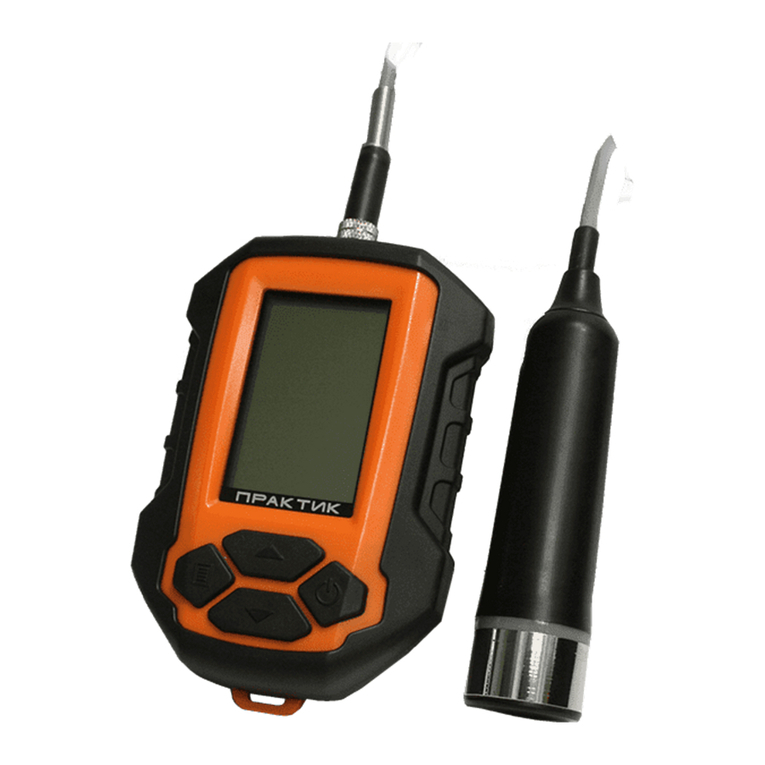
PRAKTIK
PRAKTIK 6M user manual
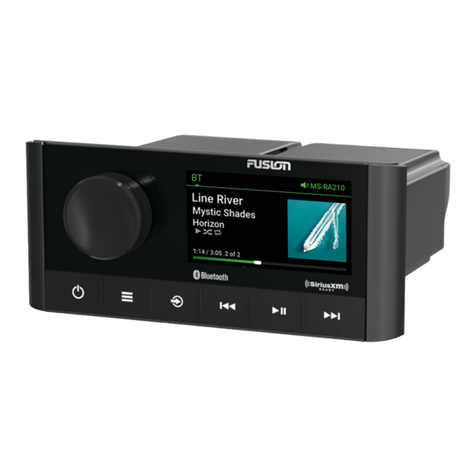
Fusion
Fusion MS-RA210 Quick start manual
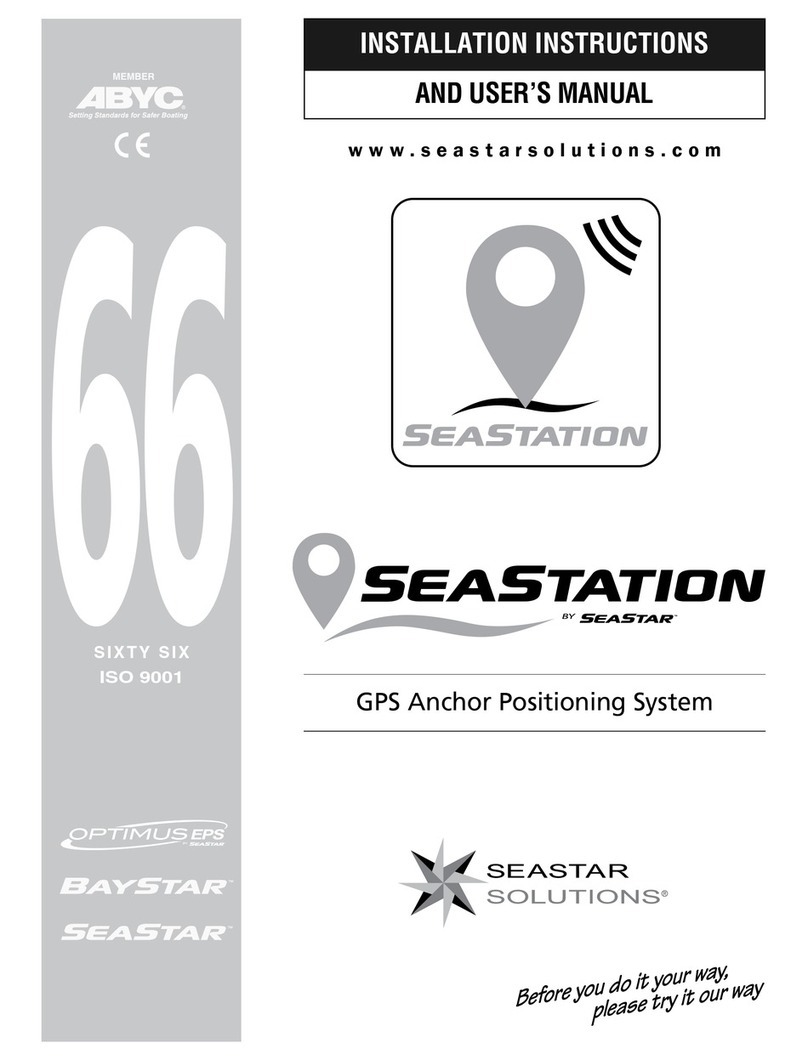
Seastar Solutions
Seastar Solutions SeaStation Installation instructions and user manual
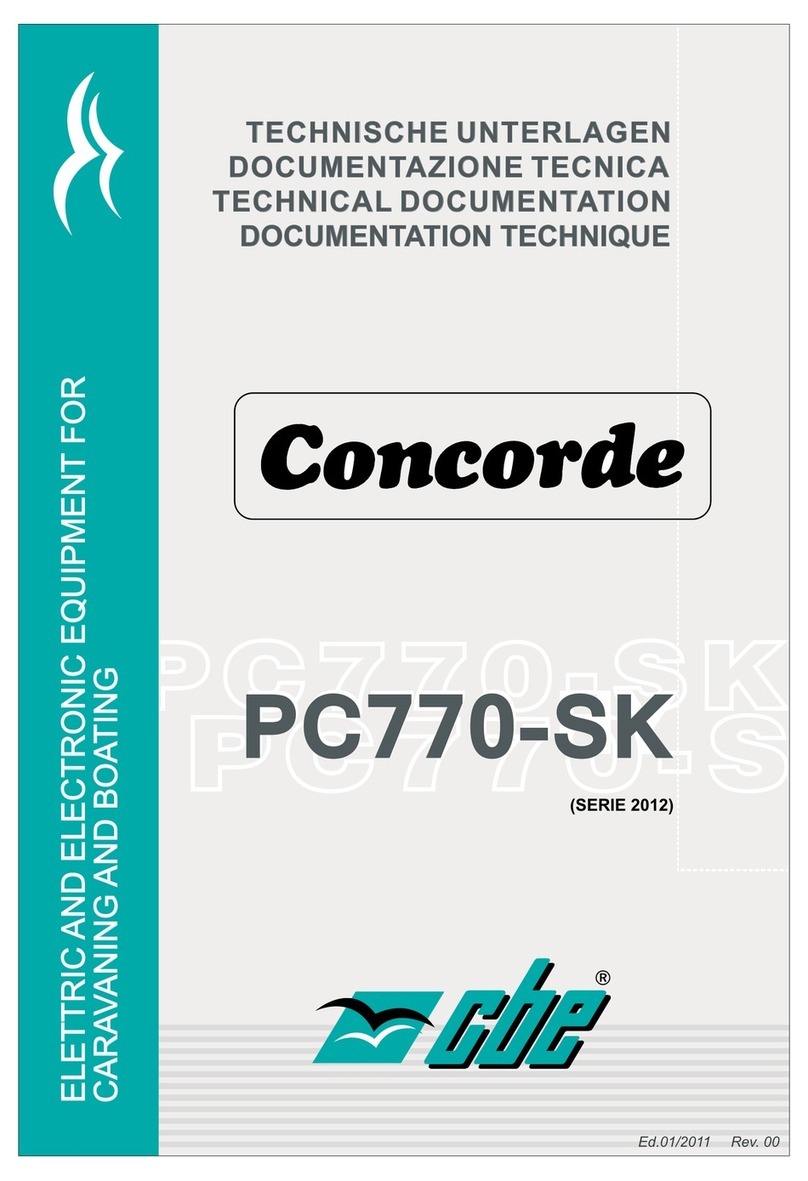
CBE
CBE Concorde PC770-SK Technical documentation
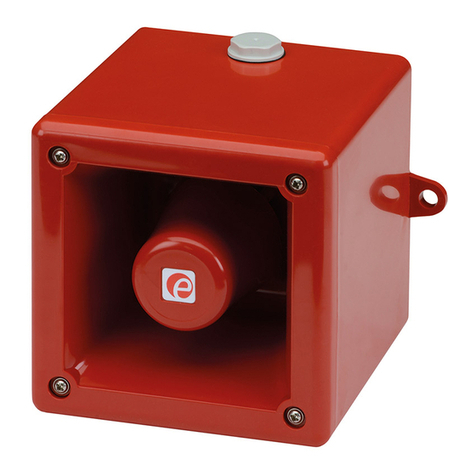
E2S
E2S A105N APPELLO DC installation instructions
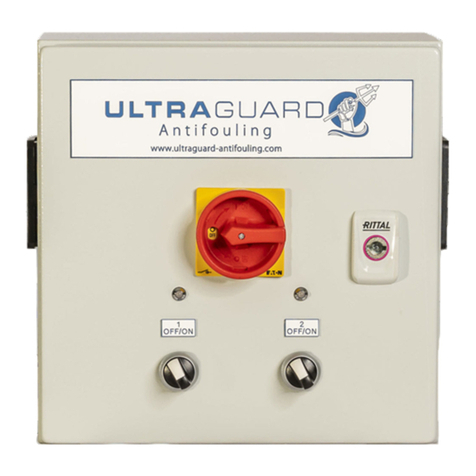
PMG
PMG Ultraguard Antifouling UG Series Operator's manual
